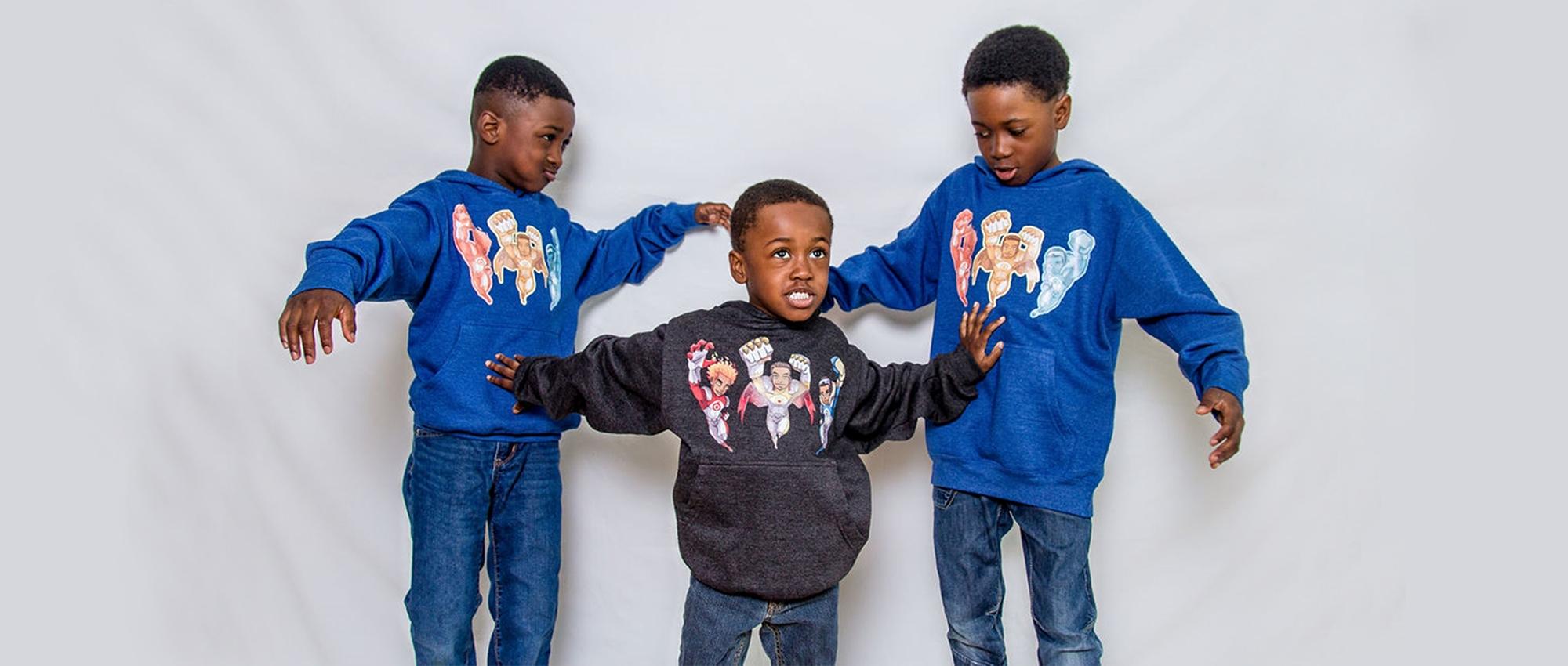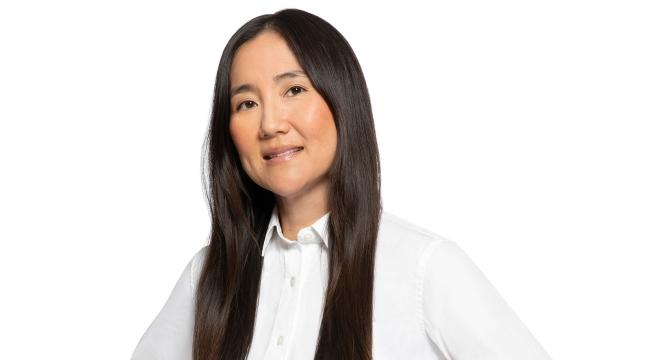‘Superpower’ boost from donors helps brothers thrive with illness
The Felix brothers are also the heroes of a comic book that is helping to raise awareness of sickle cell disease
An Ottawa-area mother is so moved by the blood donations that help her sons, she’s given them pride of place in the superhero comic she published about the boys.
In The Battle of Ottogatz, “hemoglow” infuses the Super Felix Brothers with the awesome power they need to vanquish the villain, Bacteriolos. It’s author Nahomie Acelin’s whimsical nod to hemoglobin, the molecule in red blood cells that delivers oxygen throughout the body. Two of Nahomie’s sons ― Micah Felix, 10, and Joiakim Felix, 5 ― develop abnormal hemoglobin as a result of sickle cell disease, a disorder caused by a genetic mutation most often found in people of African descent. So healthy, red blood cells from donors have seen them through a number of health crises.

Micah, Hezekiah and Joiakim Felix have starring roles as the Super Felix Brothers in their mother Nahomie Acelin’s book called The Battle for Ottogatz. The illustrations in the book, such as this one, are by Nahomie’s colleague Henry Bui.
“I think donors are incredible,” says Nahomie, who lives in Gatineau, Que., not far from the Children’s Hospital of Eastern Ontario (CHEO) in Ottawa where her sons go for treatment. “Just the fact you take the time out of your day, and you decide to go to a place where they’re going to put a needle into your arm, and it has no benefits to your personal self, I think that’s incredible.”
When she sees the pouches of blood her sons receive, she thinks about those donors she’ll never meet.
“There’s no name to the bag, there’s no face to the bag, but we know that someone decided to wake up in the morning and be a lifesaver for somebody else,” she says.
Superpowers for some super boys
Nahomie likes to remind her boys that they’re pretty incredible, too. Their superhero alter-egos began taking shape during hospital visits. Illnesses and infections can trigger a need for transfusion, and as the boys received blood, Nahomie and her husband, Ronald Felix, would spin stories to lift their spirits.
“I was like, ‘Those are your superpowers! We’re going to give you a transfusion, it’s going to make you strong!’” says Nahomie.
The idea also wound its way into the bedtime stories Nahomie and Ronald invented for the children, and eventually into the book Nahomie published in spring 2020 with illustrations by a work colleague, Henry Bui.
The comic also features Hezekiah, Nahomie and Ronald’s seven-year-old middle child who doesn’t have sickle cell disease. Just as in real life, he stands shoulder-to-shoulder with his brothers in their fight.
“That’s a value that we’re really instilling in them. That they need to help each other, they need to love each other. That if one is sick, you have to help them,” says Nahomie.

Nahomie Acelin is the author of The Battle of Ottogatz. The book was inspired by her sons, two of whom have sickle cell disease.
How donors help people with sickle cell disease
Donors across Canada stand with the Felix brothers as well. People with sickle cell disease vary in their need for donated blood. Some, like Nahomie’s sons, receive periodic transfusions. Others need to have their red blood cells fully replaced by others from healthy donors on a regular basis, through a process called “red cell exchange.”
Some patients may also have a blood type that is difficult to match, which can require support from Canadian Blood Services’ Rare Blood Program. A person’s detailed blood type is linked to ethnicity, so a Black sickle cell patient may rely on donors who are also Black for lifesaving treatment. Canadian Blood Services continually strives to recruit donors from diverse communities to meet the needs of all patients.
How we help patients with rare blood
Aaliyah’s army: how blood donors helped one child survive during a pandemic
The Sickle Cell Disease Association of Canada has partnered with Canadian Blood Services to support patients, and they invite others to join them. Blood, plasma and platelet donors can join the association’s Partners For Life team by setting up a donor account.
When you log in, select “Join/Manage Organizations,” type “Sickle Cell Disease Association of Canada” and then “join the team.” You can also add an associated regional chapter if desired. Your donations could flow to any patient in need, but by joining that team, your donations will be linked to it, demonstrating your support for sickle cell patients like the Felix brothers.
Financial donations also support the donor recruitment efforts required to help patients in Canada, including those with sickle cell disease whose need for blood is ongoing.

Ronald Felix and Nahomie Acelin have three sons: Joiakim, left, Micah, centre, and Hezekiah, right. Joiakim and Micah have sickle cell disease, and the family’s experience inspired Nahomie to write a book called The Battle of Ottogatz.
‘My kids are like every other kid’
Raising two boys with sickle cell disease is certainly far from easy. If Micah gets sick, Joiakim is sure to follow, Nahomie says. But the signs of trouble are unique to each boy, so their parents need to be vigilant. While Micah might slow down and develop a fever, Joiakim can seem as energetic and playful as ever, even when his body is heading for a crisis.
“You think he’s a normal child just living his life,” says Nahomie. “Then all of a sudden he crashes.”
The disease affects the entire family. Nahomie and Ronald may need to drop work at a moment’s notice to pick up their role as caregivers for Micah and Joiakim, while also taking care to carve out enough time and attention for Hezekiah. Sickle cell affects the boys socially as well. Nahomie is grateful that her book has helped Micah in particular to talk about his illness “without shame.”
“I knew that he never really spoke about sickle cell to his friends,” says Nahomie. “So when I wrote the book, for him it was kind of like a tangible thing that he was able to use to tell his friends that he had sickle cell. It became a tool for him.”
Like Micah, Nahomie also used to be quite private about her family’s experience of sickle cell disease, sharing it only with family and close friends.
“One of the big things was I did not want any pity,” Nahomie says. “My kids are like all other kids, it’s just sometimes they need more help than others. So it was hard for me to be vulnerable.”
But these days she is finding strength in vulnerability. She hopes sharing her family’s story will help others going through similar experiences. And it’s therapeutic for her as well.
“When I decided to write the book it was really a gift to my kids, but it was a gift to myself as well, to really share my story at the same time,” Nahomie says. “It became an avenue for me to be honest about my reality.”
Donations to Canadian Blood Services help patients with sickle cell disease and many other conditions. Learn more about all ways to donate. You can also join the Sickle Cell Disease Association of Canada’s Partners for Life team when you sign in or create your donor account.



